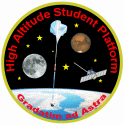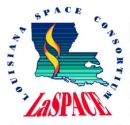



Payload 07 Information
Payload Flight Number:
Institution:
Payload Title:
Measurement of ozone profile in the stratosphere using improved nanocrystalline sensor arrays payload on a high altitude balloon platform.
Student Leader:
Faculty Advisor:
Payload class:
SMALL
Payload ID Number:
07
Mass:
1.3 kg
Current:
0.330 A
Serial Downlink:
Analog Downlink:
No
Serial Commands:
No
Discrete Commands:
No
Payload Specification & Integration Plan
Due: 06/22/2012
Delivered:
Payload Integration Certification
Scheduled: 08/03/2012
Actual:
Flight Operation Plan
Due: 07/30/2012
Delivered:
Final Flight / Science Report
Due: 12/14/2012
Delivered:
Abstract:
The UND and UNF team have successfully flown payloads on both the HASP 2010 and 2011 balloon flights and measured the ozone gas profile in the stratosphere during August-September 2011. Both sensors payloads worked well during the flight and measured the variation of concentration of ozone with altitude. The nature of measured ozone profile matched very well with the theoretical expected profile. Based on the success and the few known scientific and technical problems of these payloads, the UND-UNF team proposes a HASP 2012 flight for the verification of experiment using improved version of the gas sensor arrays, hardware, software and payload. Two different groups of ozone sensor arrays: (i) nanocrystalline ITO thin film and (ii) nanocomposite ZnO-ITO and WO3-ITO gas sensors will be used for the comparison of performance of the sensors. Instead of mounting one sensors box on one side of the rectangular shape payload, we propose to mount ozone sensor array and one light sensor on all the four sides of the payload in order to measure ozone concentration in the presence of UV light. This concept will help us understanding the effect of any shadow on the sensors, particularly at the time of sunset. In addition, a temperature sensor, a pressure sensor and a GPS will also be mounted in the payload. A hollow metal tube structure instead of metal frames will be used to make the payload body in order to reduce its mass and easy access of hardware. Ozone sensors will be fabricated and calibrated with ozone gas in low pressure chamber at UNF, and then at UND labs for the cross verification. Then, UNF sensors will be integrated with the UND electronics circuit and software to complete the payload. Both teams will jointly analyze the data after the flight. Furthermore, the surface topography of the sensors before and after the flight will be studied using a scanning electron microscope, and the chemical composition of the surface of the sensors will be analyzed by energy dispersive analysis of x-rays at UNF. This student project may be supported by both North Dakota and Florida Space Grant Consortia.
Payload Integration Plan:
PrePSIP_UND-UNF_v042012.pdf PrePSIP_UND_v042012.pdf UND-UNF_PSIP_v062212.pdf |